Jasmine is one of the most popular flowers in the world. Not only do they look gorgeous, but true jasmine plants are renowned for their distinctively sweet smell. The plant is known for its ability to attract bees.
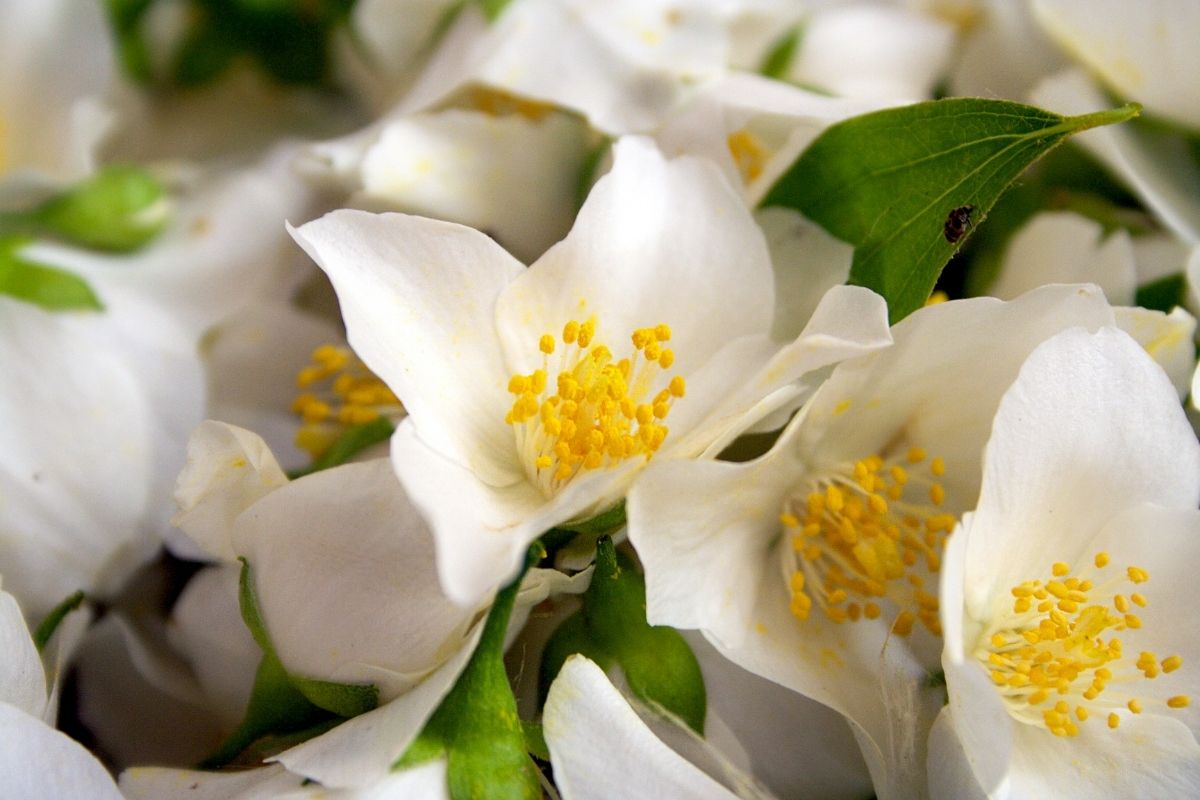
The flower is also used to make cosmetics, perfume, and tea. Jasmine oil is extracted from the flowers and used in the making of these cosmetics. Meanwhile, Jasmine tea is made from the flowers and leaves of the plant.
If you want to grow the flower, there are many varieties of Jasmine plants available. Here are some of the most popular ones:
1. Japanese Jasmine
This variety is native to Japan, Korea, and China. However, it can also be found in lots of other countries, including Mexico. As you may have guessed, it gets this name because it originated in Japan.
It grows up to 6 feet (1.83 m) tall and blooms in early spring. It grows particularly well in warm climates. This variety of Jasmine has numerous uses, including cosmetics, religious rituals, and perfumes.

2. French Jasmine
Secondly, this variety was introduced into Europe in the 18th century. This beautiful flower now grows in many parts of the world, including France.
It will reach between 5 and 10 feet tall and blooms throughout the year. French jasmine plants are not as reliant on hot temperatures as other varieties.
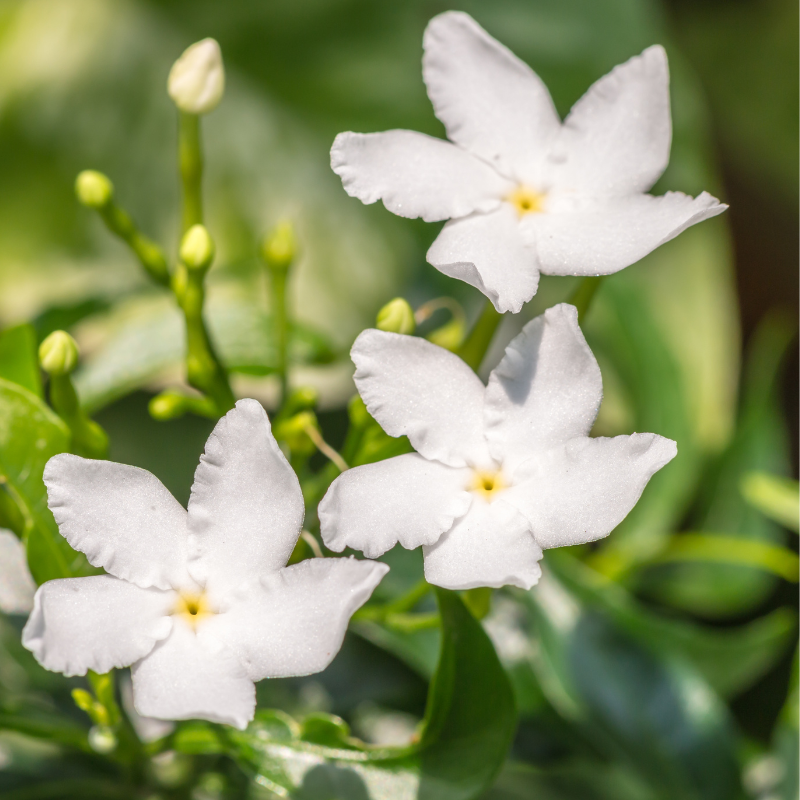
3. Chinese Jasmine
As hinted by its name, Chinese jasmine originated in China and India. This variation is one of the most popular flowers in China.
It grows up to 8 to 12 feet (3.66 m) tall and blooms from late winter through spring.

4. Hybrid Jasmine
This variety combines the characteristics of the above three varieties. Hybrid Jasmine is a beautiful flowering shrub that produces fragrant white flowers in spring and early summer.
It will reach roughly 7 to 15 feet (4.57 m) tall and blooms all year round. Hybrid Jasmines are available in many colors and sizes.
Some varieties include ‘Blue Spruce’, ‘Flamingo Pink’, ‘Pink Ice’, ‘White Ice’, “Snow White”, and ‘White Snowflake’.
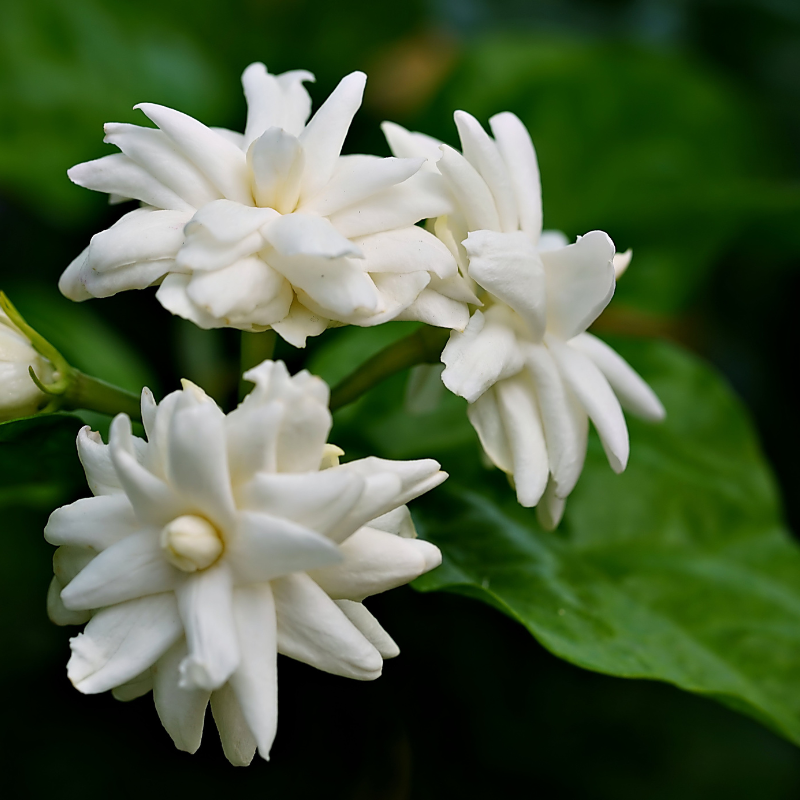
5. Common Jasmine
The common jasmine originates from Persia and India. It is commonly found growing wild in North America.
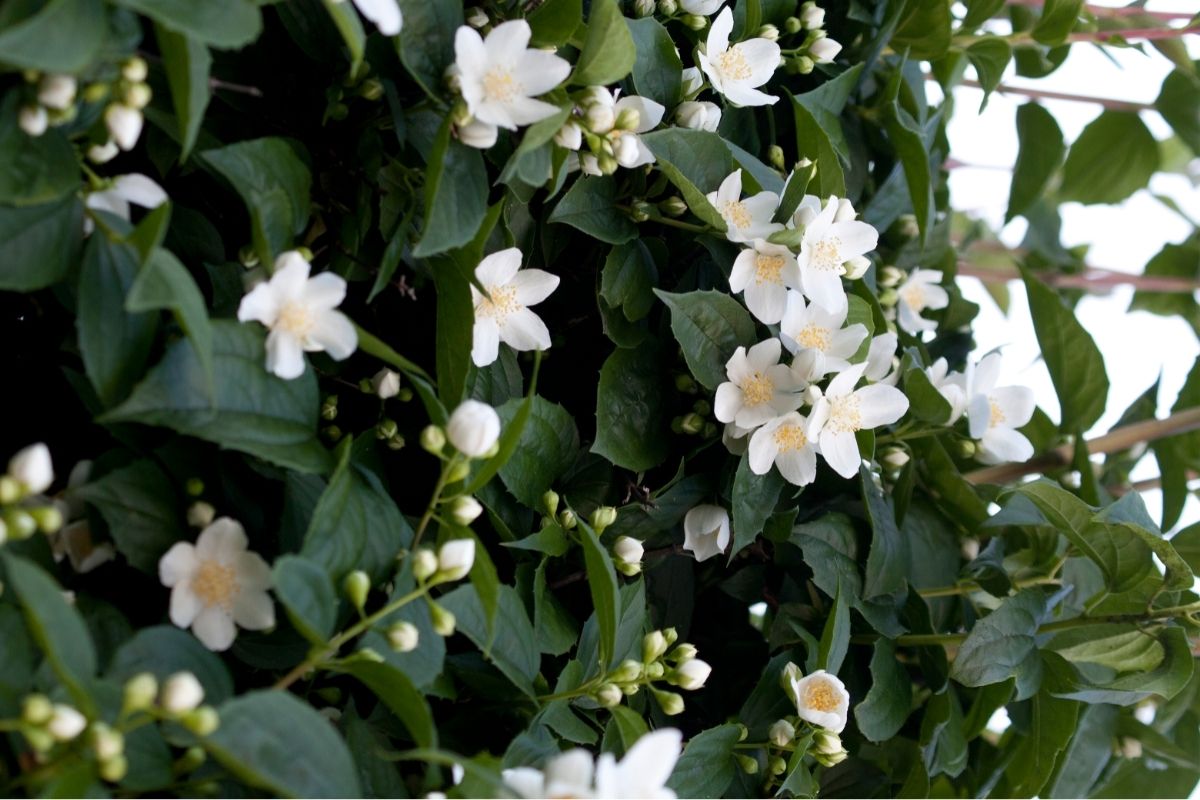
6. Evergreen Jasmine
Next, the evergreen variety has green leaves all year round. Evergreen Jasmine is one of the most popular fragrant plants used in perfumes and cosmetics.
It grows up to 4 to 6 feet (1.83 m) tall and blooms in early spring.
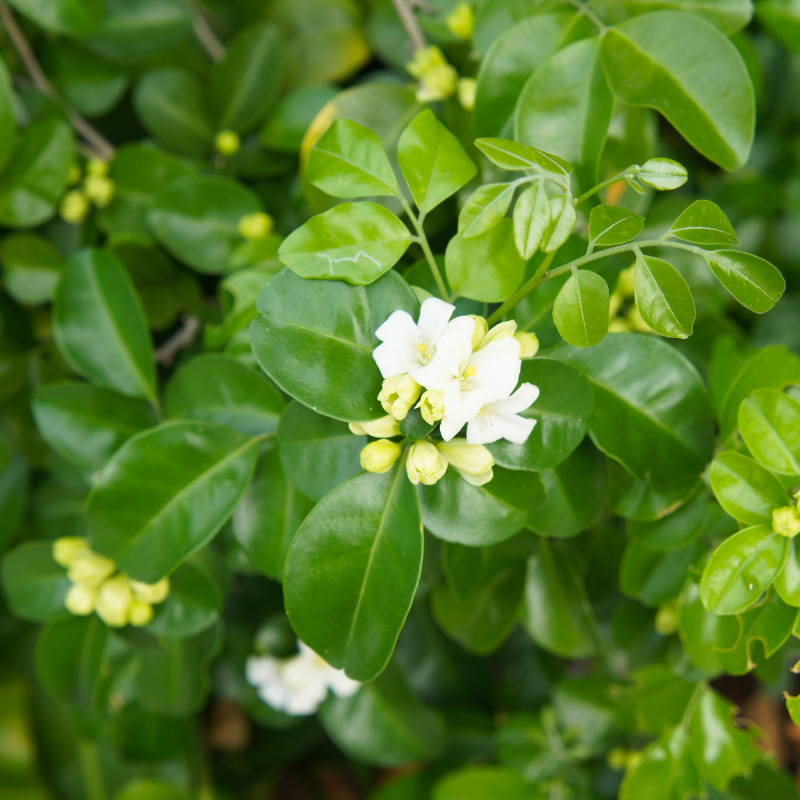
7. Fragrant Jasmine
If you are looking for fresh-smelling jasmine, you have come to the right place. This type produces fragrant white flowers.
It reaches up to 3 to 4 feet (1.22 m) in height and springs between April and May.
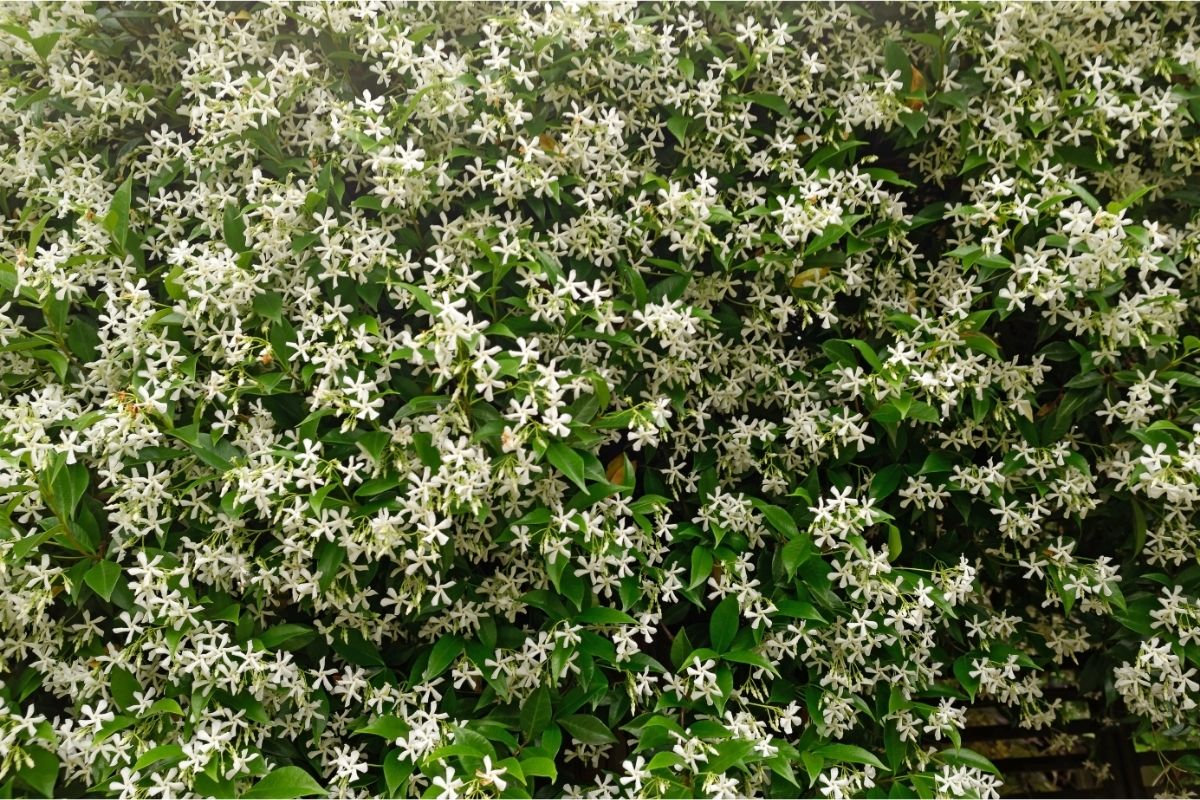
8. Oriental Jasmine
Oriental grows to a maximum of 20 feet (ca. 6 m) tall. Plus, it will bloom during the summer.
Oriental Jasmine is grown in warmer areas, such as southern Asia, Southeast Asia, and East Asia.
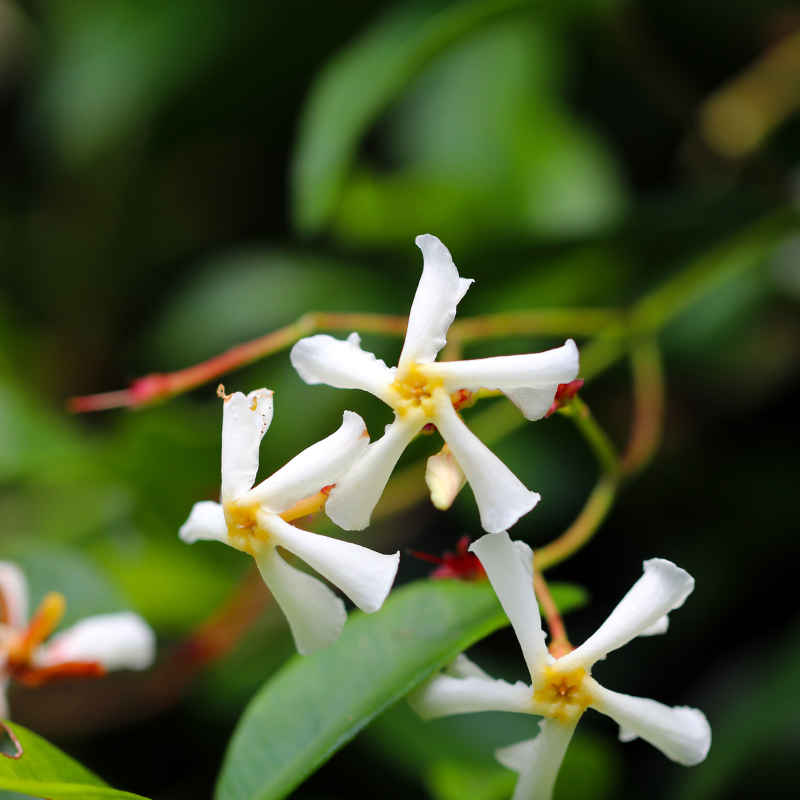
9. Dwarf Jasmine
If you are looking for a smaller variation of jasmine, this one can grow as small as 1 foot tall. This tiny height is how this variety gets its name.
However, it grows up to 2 to 3 feet (0.91 m) tall and blooms in early spring.
Dwarf Jasmines grow well in full sun and do not require much water. They prefer soil rich in organic matter. They bloom from May through July.
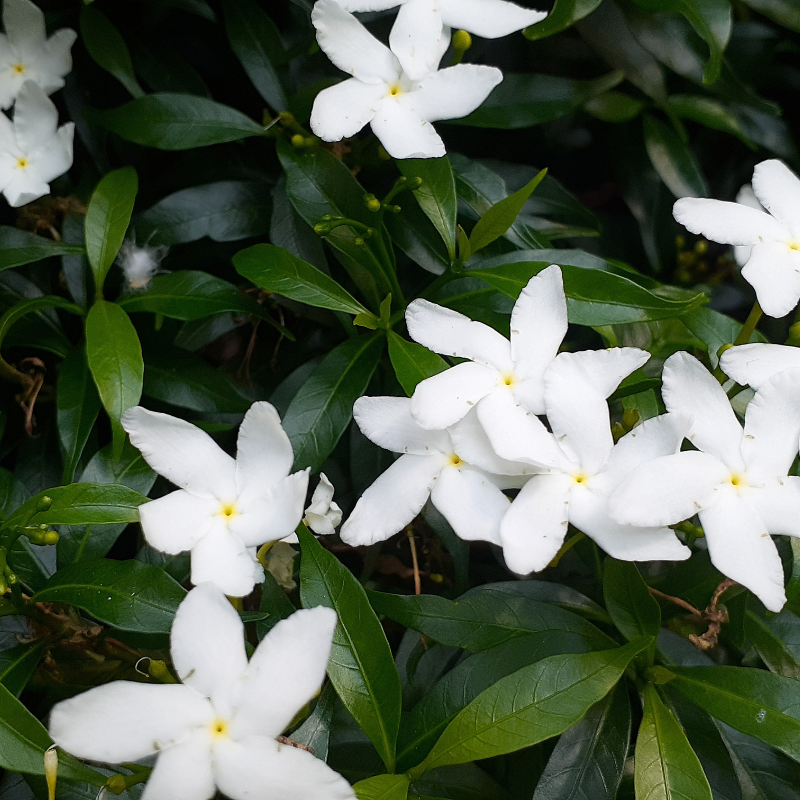
10. Miniature Jasmine
This variety reaches only a few inches high, hence its name. It is even smaller than dwarf jasmine.

11. Snow Jasmine
Snow jasmine blooms in the fall. It grows up to 2 to 3 feet (0.91 m) tall and blooms after the first frost.

12. Dwarf Snow Jasmine
This jasmine variety reaches a few inches in height. It blooms in the fall, but it does not have any fragrance. This is pretty uncommon among jasmine plants.

13. Snow White Jasmine
Beautiful to look at, this type of jasmine is akin to snow when it blooms.
Once fully grown, it will be between 6 and 9 feet (2.74 m) tall. It emerges around Christmastime. Therefore, it is an ideal winter plant.

14. Pink Jasmine
This variety comes in pink or white colors.
Pink Jasmine is a beautiful flower that grows in tropical climates. Its leaves are small and round, while its flowers are large and fragrant. Pink Jasmine blooms throughout the year, but it’s most abundant during spring and fall.
Pink Jasmine is commonly used in floral arrangements and potpourri. It adds a sweet fragrance to the air and makes a lovely gift. It grows up to 10 to 14 feet (4.27 m) tall and blooms at night.
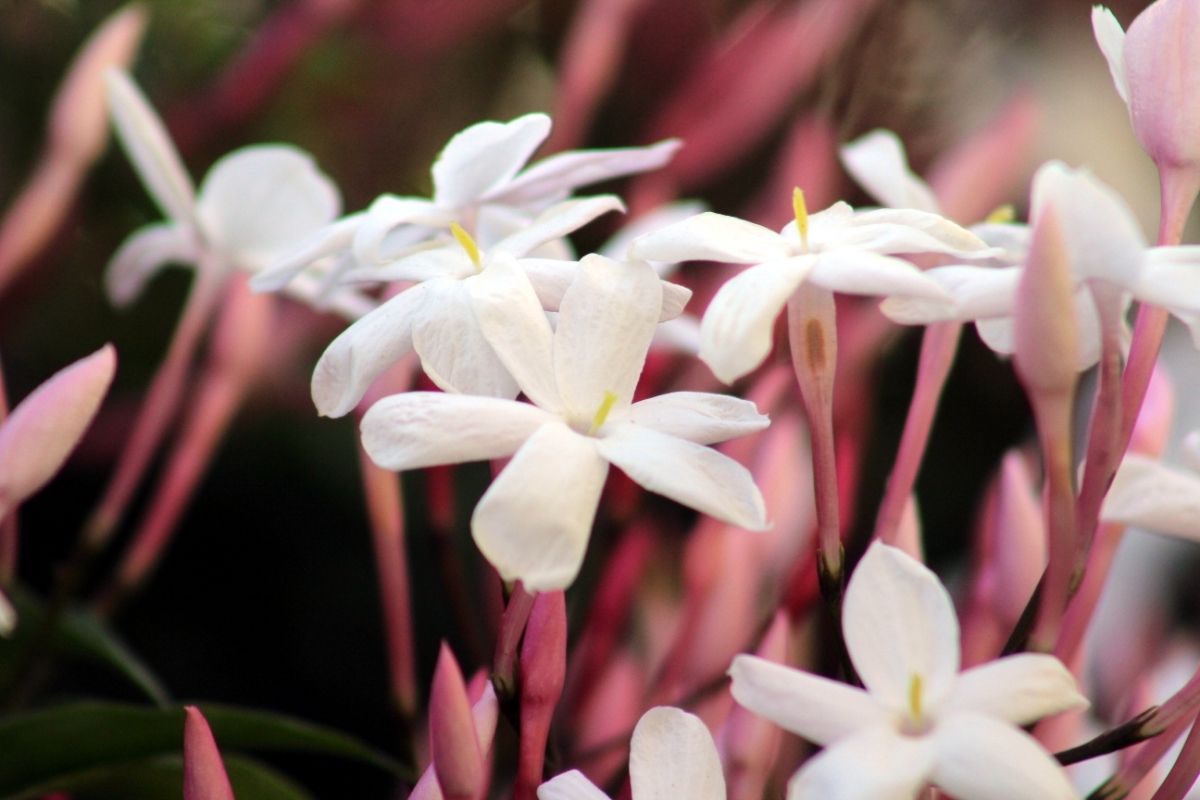
Related: How To Prune Azaleas: Tips & Tricks To Make It Easier?
15. Silver Jasmine
As you may have guessed, silver jasmine resembles silver when it blooms. It grows up to a few feet tall and blooms mostly in the fall.

16. Purple Jasmine
Next, this flower appears purple when it blooms. It is a great choice for people looking to add some color to their garden or flower arrangement. This variety will become a couple of feet tall and will bloom mainly in the fall.
Purple Jasmine is one of the most beloved types of jasmine. It produces large, showy flowers that range in color from deep purple to pale lavender.

17. Yellow Jasmine
As you can imagine, yellow jasmine appears yellow when it blooms. The plant grows up to a few yards tall and blooms in the fall and winter.
Yellow jasmines grow in India, Thailand, Indonesia, Malaysia, and Vietnam. If you are a lover of yellow flowers, this type will be an outstanding option for you.

18. Arabian Jasmine
This type takes its name from Arabia, where it originated. It grows up to 30 feet (ca. 9 m) in height and blooms with red-orange petals.

19. Golden Jasmine
This variety contains golden yellow petals. It grows up to 25 feet (ca. 8 m) tall and blooms primarily in the autumn.
Golden Jasmine is one of the most popular flowers in China. It symbolizes happiness, joy, and longevity.

20. Blue Jasmine
The gorgeous blue jasmine contains blue petals. It will reach approximately 10 feet (ca. 3 m) tall. The blooming of blue jasmine occurs in the fall. People use Blue Jasmine in perfumes, potpourri, sachets, and floral arrangements.
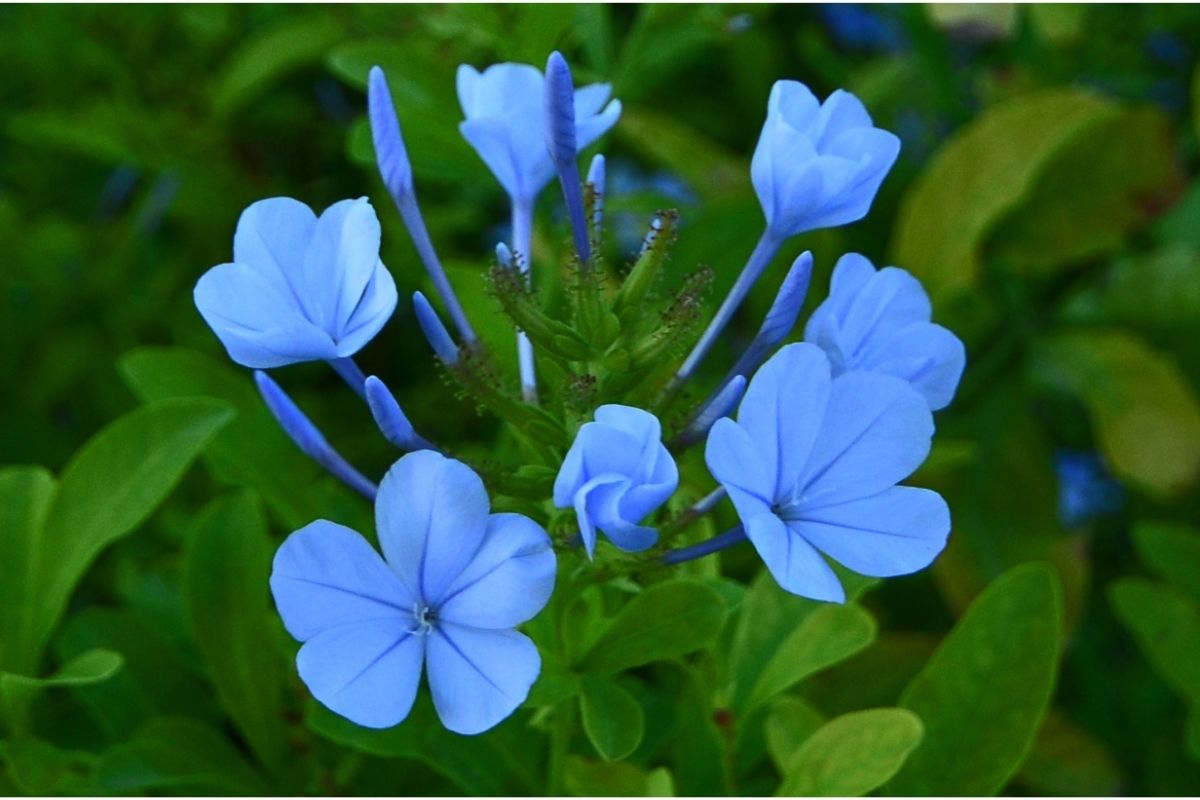
21. Rose Jasmine
This variety includes rose-colored petals. It develops in mid-summer. It grows up to 10 feet (ca. 3 m) tall and is suitable for hanging baskets.

22. Red Jasmine
This variety includes red petals. They are quite tall, reaching over 10 feet (ca. 3 m). Its bloom time is in early summer. Interestingly, red jasmine is a member of the lily family.

23. White Jasmine
This type of jasmine has no color on its petals. It can come in a range of sizes, around 5 to 10 feet (ca. 3 m) high, and blooms in the fall.

24. Green Jasmine
This variety is covered with greenish-white petals. It grows 8 to 12 feet (3.66 m) tall and blooms in late spring. Chinese herbalists use green jasmine tea to enhance memory and concentration.
A recent study showed that green jasmine flower tea can help people fall asleep faster and stay asleep longer.
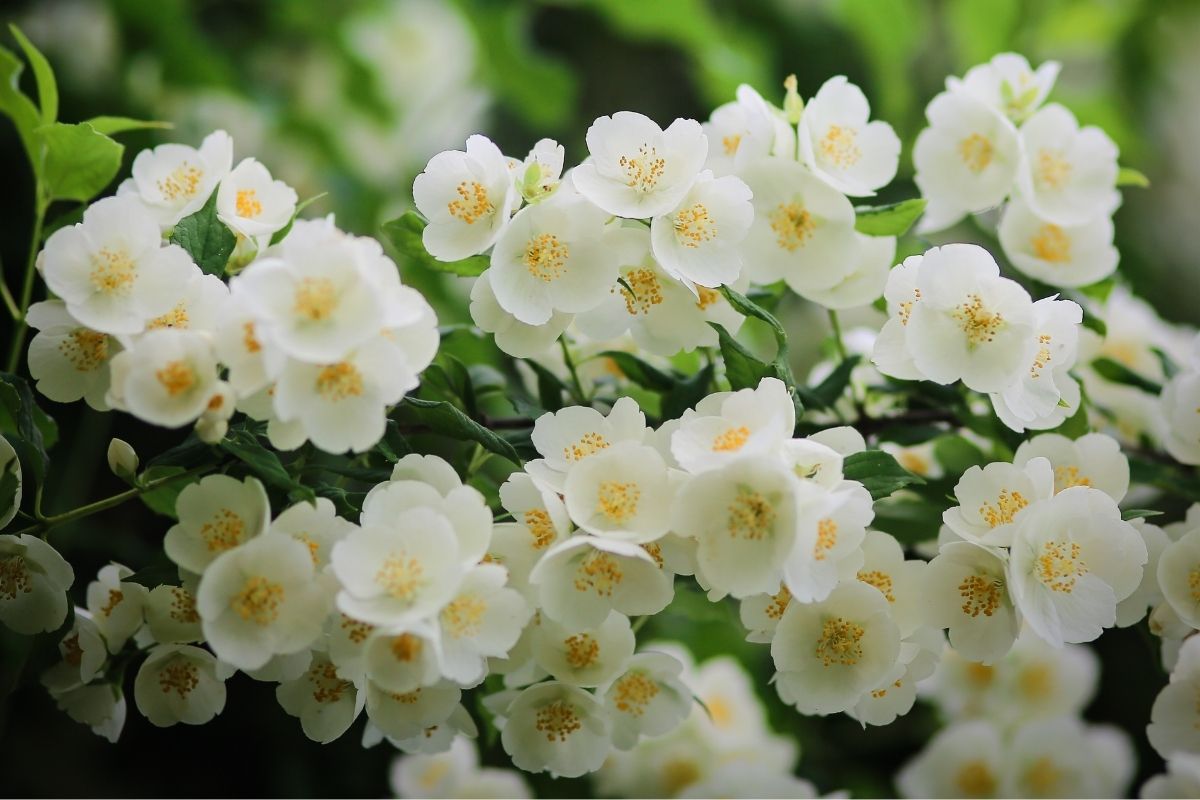
25. Winter Jasmine
Winter jasmine stays dormant during the cold months. In the spring, it starts growing again. This is why it has this title. It is incredibly tall, reaching 15 feet (4.57 m).
Winter jasmine will emerge from November through March.

26. Autumn Jasmine
This variety remains dormant during the hot months. In the spring and fall, it begins to bloom. It grows up to 18 feet (5.49 m) tall and blooms all year long. Plant autumn Jasmine in moist soil in partial shade.

27. Double Jasmine
Finally, double jasmine gets its name from the fact that it has two clusters of flowers per stem.
This creates a magnificent image. Double jasmine grows up to 24 feet (ca. 7 m) tall and blooms throughout the year.

Frequently Asked Questions
Will Jasmine Survive Winter?
Most varieties of jasmine do not like the harsh elements of winter. However, if you live somewhere that experiences mild winters, then your plants should be fine.
If you have any doubts, then you may want to consider planting them in pots or containers, so they are protected from the elements. This will give you the option of bringing them inside during the winter.
Of course, this will mean that they receive less direct sunlight. Consequently, you may want to consider giving your jasmine time to adapt to the indoor setting.
Can You Grow Jasmine Indoors?
Usually, jasmine is grown outdoors. This is because they like getting direct sunlight, which is easier to acquire outdoors. However, you can also grow it inside if you prefer.
Smaller varieties, such as dwarf and miniature jasmine, will be best suited to growing indoors. They are easy to care for and do not take much space.
So, what are you waiting for? Go ahead and buy some now!
Is Jasmine Simple to Grow?
Yes, it is relatively simple to grow jasmine. You will need a sunny spot, well-drained soil, regular water, fertilizer, and plenty of space.
If you are planning to keep your plants outside, make sure they have enough room to spread out.
Jasmine prefers full sun but will tolerate part shade. Unlike other plants, it will not require a huge amount of maintenance.
When buying jasmine from a garden center or online, be sure to get one that looks healthy. Different varieties will need to be planted at different times. Generally, jasmine should be planted during autumn or spring.
The best time to plant depends on when you want your flowers to start blooming. For example, if you plan to have your jasmine blooming in the spring, then you would plant them in the fall.
However, if you want your flowers to blossom in the summer, then you should plant in the spring.
Final Thoughts
If you want a beautiful garden, then get your hands on these types of jasmine plants. You will be able to enjoy their beauty and sweet fragrance for years to come.
As you can see from the list above, there are plenty of varieties to choose from.
Editor’s Recommendations
Dahlias: The Number 1 Care, Propagation, and Watering Guide For Your Garden Flowers
Mesmerizing Shapes and Vibrantly Colored Flowers in One – Flowering Bonsai
Types of Naked Ladies Flowers – Three Species Under the Same Name







